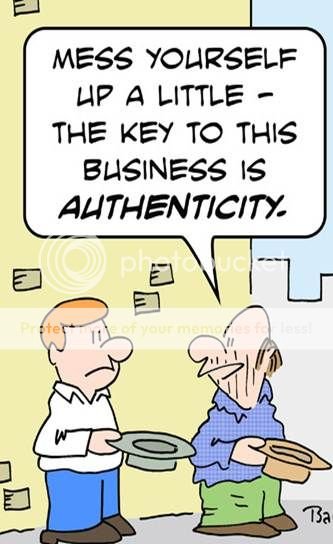I. Professional Panhandling
I’m going to start off this next topic by asking you to refer to the disclaimer from the beginning of this book, and ask that you make your own moral judgments and decisions before implementing this and any of the suggestions in this book.
Professional panhandling has become a very realistic economic activity that is here to stay. Virtually every city of any size has an established population of professional panhandlers, most of them doing well in that lifestyle and often surprisingly well. It is quite difficult to tell the difference between the homeless who may need organized charitable assistance and panhandlers who don't really want or feel they need help and only want your money; because that's the career they've chosen. The real homeless are usually looking for legitimate ways to solve their problems and are too proud or too inexperienced to make good panhandlers. If someone approaches you actively asking for money they're almost certainly a pro, and might well make more money than you do.
A recent study in the city of Denver revealed these startling statistics: Over 42% of the population has given money to panhandlers in the past year and the average person there gives $1.84 each time he or she is approached by a panhandler, for a total of about $25 a year. This adds up to an awful lot of money - a total of over $4.6 million, divided among about a thousand panhandlers. That's an average of about $50,000 per active panhandler per year. Confidential interviews with panhandlers have revealed that they make between $35,000 and $100,000 tax free per year and view panhandling as the equivalent of a job or a profession. Some even have homes and support families on their panhandling income.
Anecdotal surveys by journalists and police, and even testimony by panhandlers themselves in other cities around the country substantiate the Denver survey, suggesting that begging can yield anywhere from $20 to $100 a day with some taking in as much as $300 a day, tax-free money.
The rise of online panhandling advice helps explain why panhandlers and “sign flyers” (beggars who use signs to solicit donations) exhibit remarkably similar methods around the country. Don’t believe me? Check it out for yourself. The next time you are driving around the city take notice to the similarities in both signage and approach of the panhandlers you come in contact with. Currently, the direct, humorous approach is in vogue. That’s why in many cities today you’ll hear some version of: “I won’t lie to you, I need a drink.” Panhandlers also report that asking for specific amounts of money lends credibility to pitches. “I need 43 more cents to get a cup of coffee,” a panhandler will declare; some people will give exactly that much, while others will simply hand over a buck.
If it seems unlikely that a homeless person would surf the Web for advice on how to panhandle, that’s exactly the point: many aren’t homeless and are lying about their circumstances.
There a variety of websites dispense panhandling advice.
http://www.pbs.org/weblab/needcom/
Subtitled “Market Research for Panhandlers”—offers tips from pros on how to hustle. The website’s developer, Cathy Davies, wants it to get people “thinking about panhandling as a realistic economic activity, rather than thinking that panhandlers are lazy or don’t work very hard.”
Okay so if you haven’t flipped ahead to the next chapter already out of pure disgust, here are a few additional how to pointers. You can take looking the part to the next level by purchasing an old man or old lady mask at sites like
http://www.spfxmasks.com/
They specialize in horror and movie masks but also make old lady and old man masks that are movie quality. Another site is
http://www.compositeeffects.com/
Splurging on a train ticket so you are not panhandling too close to home where folks may recognize you are just common sense as well.

nice post